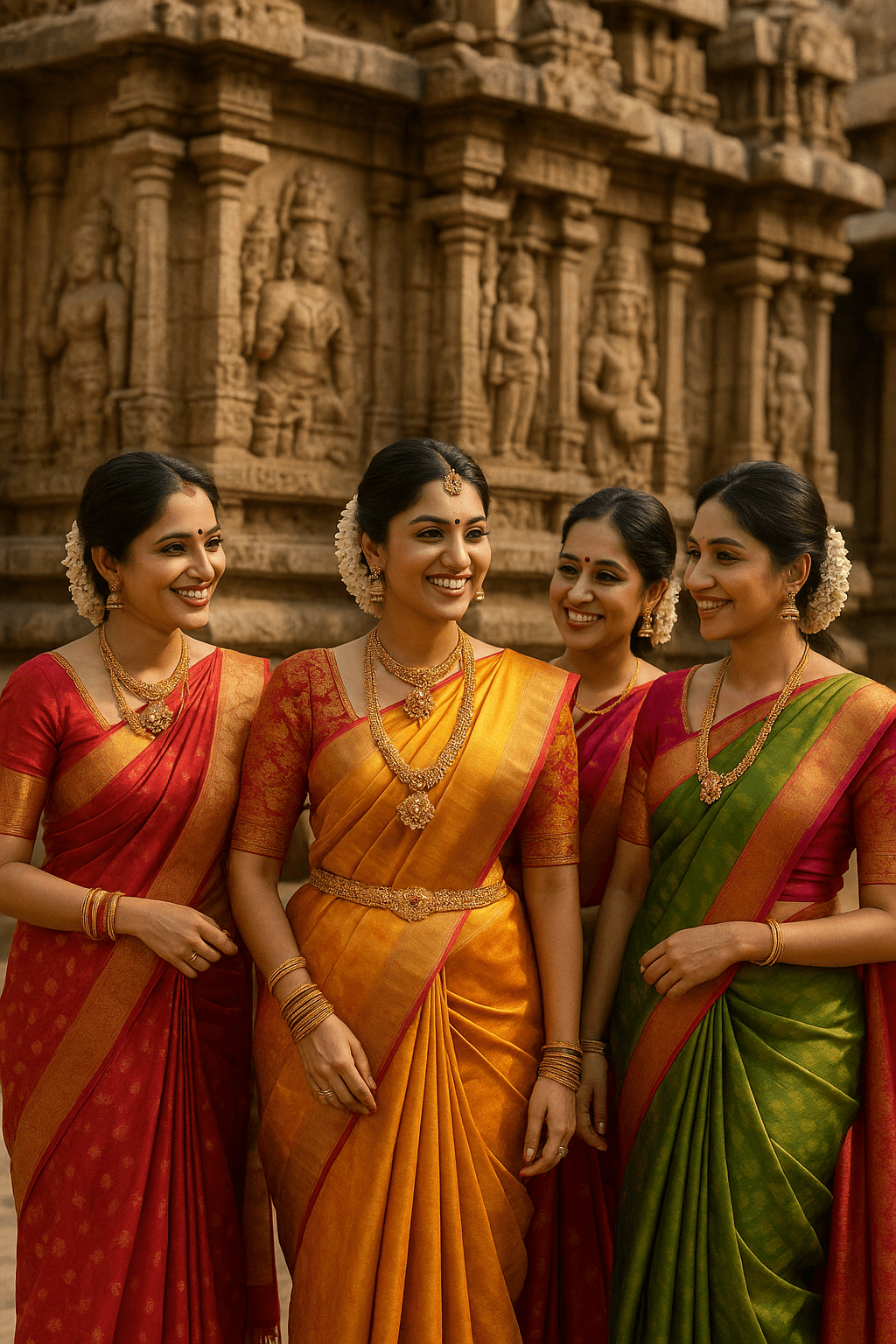
Kanjeevaram sarees, hailing from the temple city of Kanchipuram in Tamil Nadu, India, are a testament to the rich cultural heritage and exceptional craftsmanship of South India. These sarees, known for their vibrant colors, intricate designs, and luxurious feel, have been a symbol of grace and tradition for centuries. Let us delve into the history and artistry that make Kanjeevaram sarees so unique and cherished.
The origins of Kanjeevaram sarees can be traced back over 400 years. It is believed that the art of weaving these exquisite sarees was brought to Kanchipuram by the descendants of Sage Markanda, the master weaver for the gods in Hindu mythology. The Chola dynasty, which ruled over Tamil Nadu from the 9th to the 13th century, played a significant role in promoting and preserving this weaving tradition.
Under the patronage of the Chola kings, the weavers of Kanchipuram refined their skills and techniques, creating sarees that were not just garments but pieces of art. The tradition was further nurtured during the reign of the Vijayanagara Empire, which ruled South India in the 15th and 16th centuries.
The beauty of a Kanjeevaram saree lies in its meticulous weaving process, which has remained largely unchanged over the centuries. The sarees are made from pure mulberry silk threads, which are interwoven with zari – a type of fine gold or silver thread. The result is a fabric that exudes richness and elegance.
The traditional loom used for weaving Kanjeevaram sarees requires immense skill and patience. Each saree can take anywhere from a few days to several weeks to complete, depending on the complexity of the design. The weavers use a technique known as ‘Korvai,’ which involves interlocking two different colored threads to create stunning contrast borders and intricate motifs.
One of the hallmarks of Kanjeevaram sarees is their intricate designs and motifs, which are often inspired by nature, mythology, and temple architecture. Common motifs include peacocks, flowers, elephants, and scenes from Hindu epics like the Ramayana and Mahabharata. The borders and pallu (the decorative end of the saree) are usually adorned with elaborate patterns, adding to the saree’s overall grandeur.
Kanjeevaram sarees hold a special place in Indian culture and are often worn during weddings, festivals, and other auspicious occasions. They are considered a symbol of purity and prosperity, making them a popular choice for brides. The timeless appeal of these sarees lies in their ability to seamlessly blend tradition with contemporary fashion.
Despite the advent of modern textile techniques and changing fashion trends, the tradition of Kanjeevaram weaving has managed to endure. Organizations and artisans are working tirelessly to preserve and promote this ancient craft. Many young weavers are being trained in the traditional methods, ensuring that the legacy of Kanjeevaram sarees continues to thrive.
Kanjeevaram sarees are more than just beautiful garments; they are a celebration of India’s rich cultural heritage and the unparalleled skill of its weavers. Each saree tells a story of tradition, artistry, and timeless elegance. As we admire the intricate designs and vibrant colors of these sarees, we pay homage to the generations of artisans who have dedicated their lives to perfecting this craft. Owning a Kanjeevaram saree is not just about possessing a piece of clothing; it is about embracing a piece of history and celebrating the artistry that defines Indian heritage.